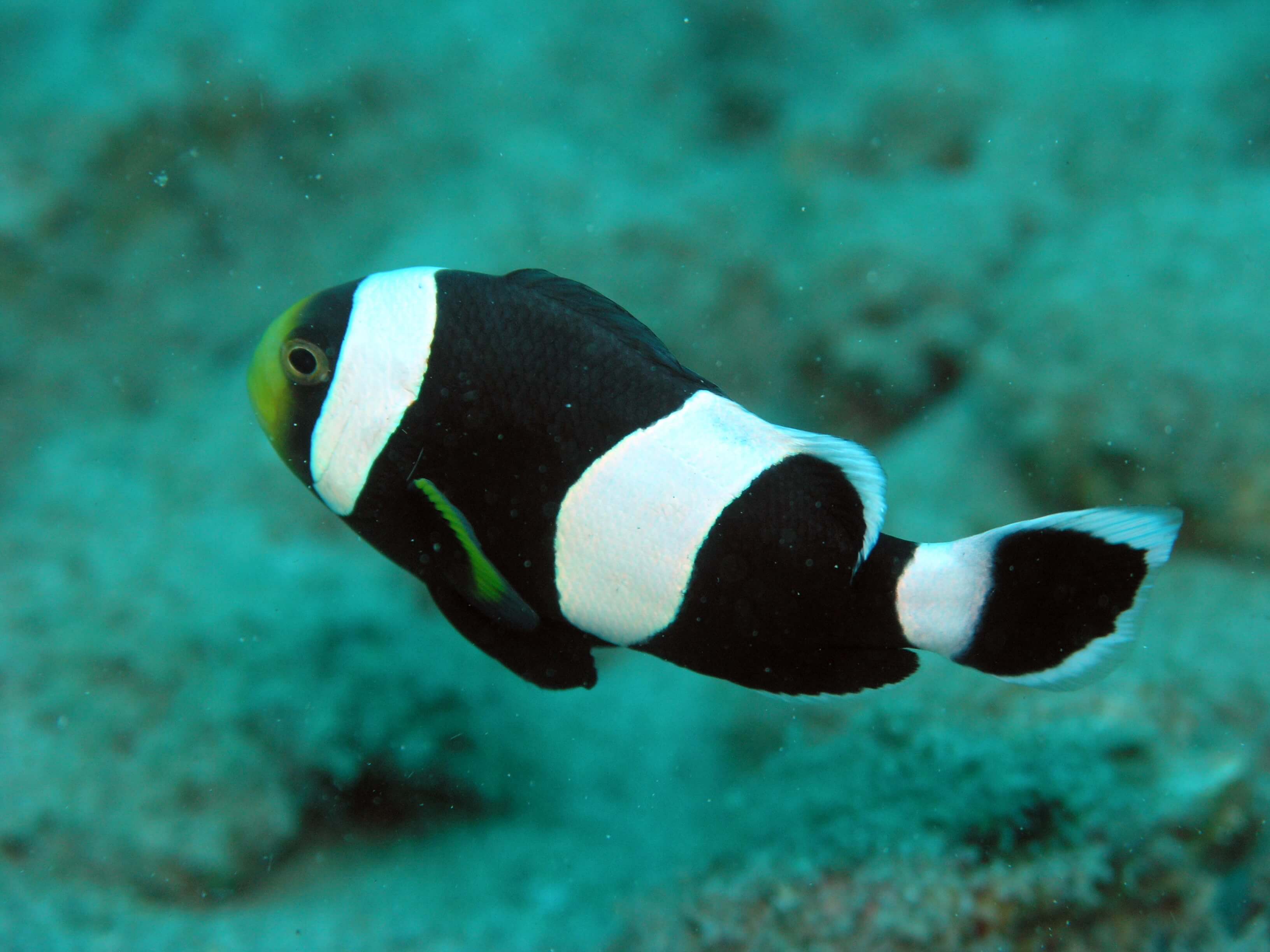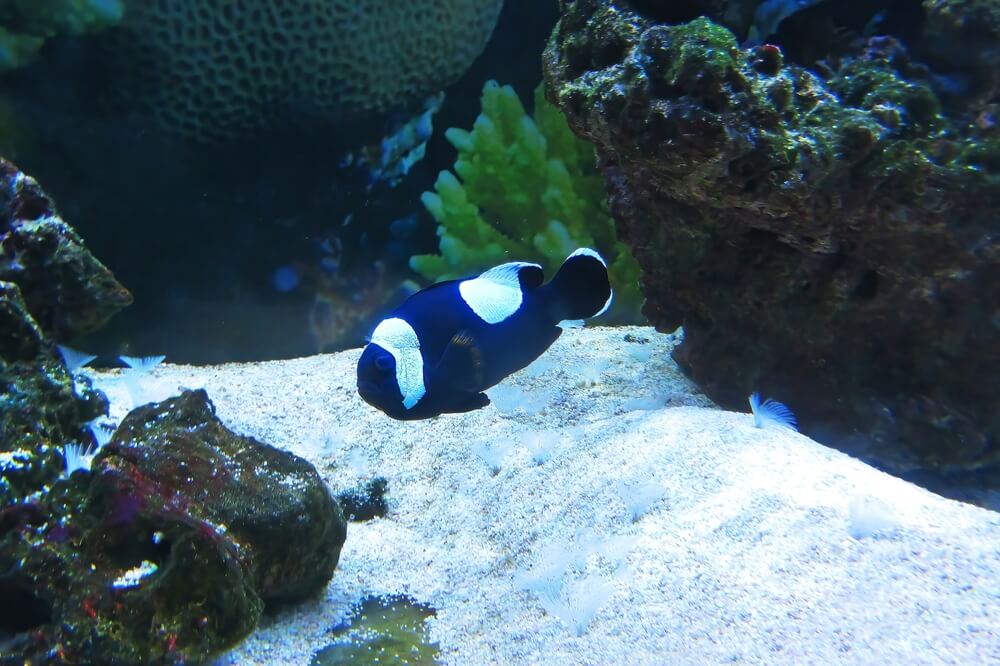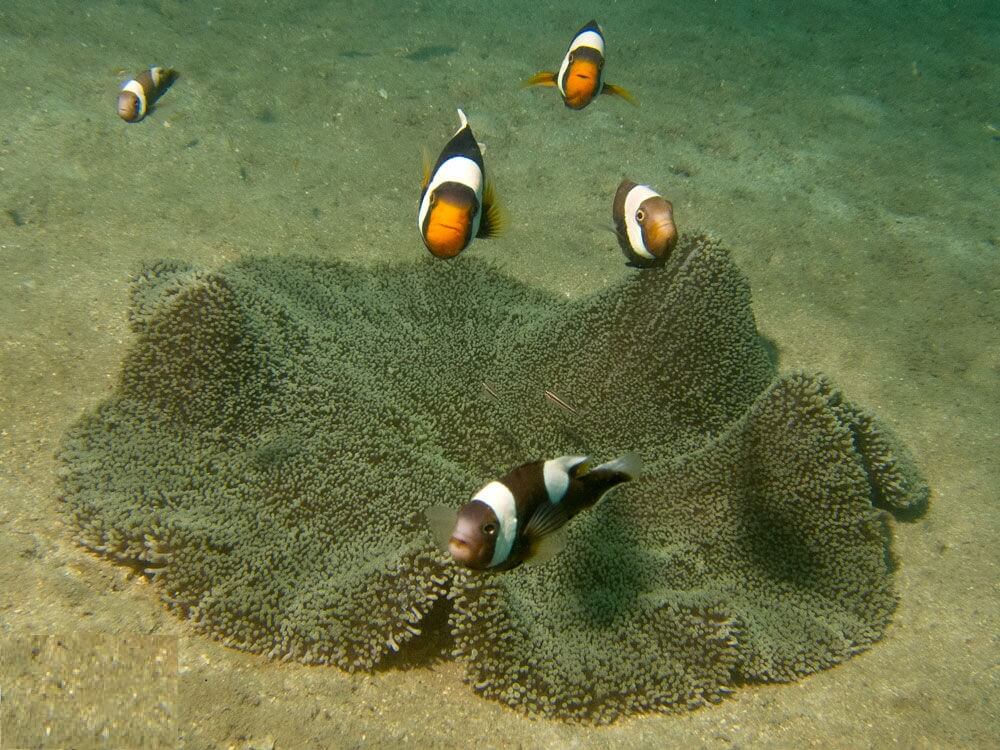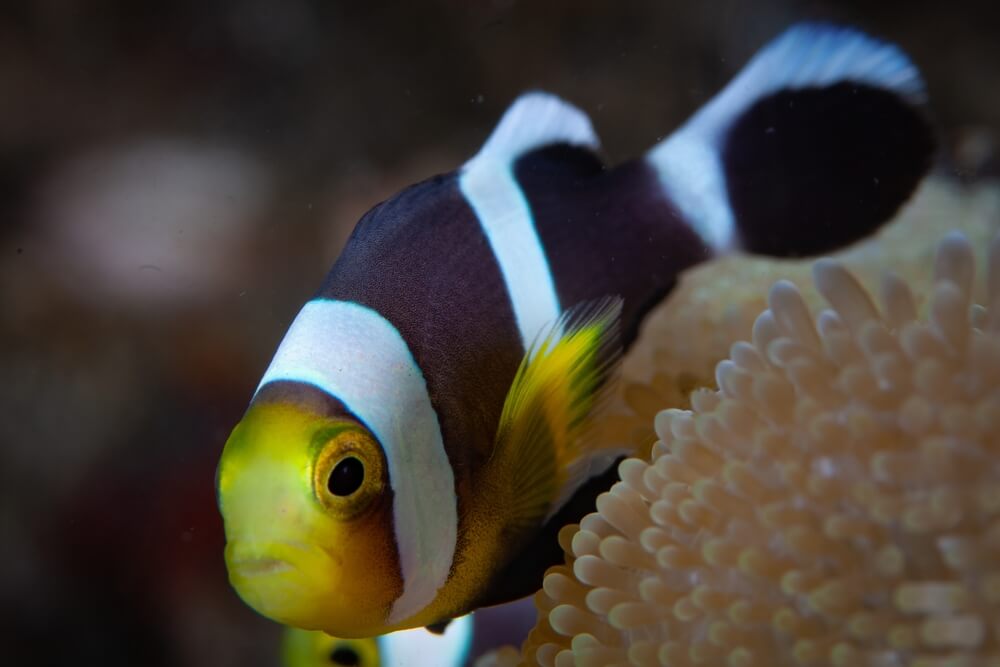Saddleback Clownfish Care Guide: Tank Mates, Lifespan, Size & More
Posted by Miles Harrison on 08/28/2022
Last Updated on 10/12/2022
Impressive in appearance, the Saddleback Clownfish can be an excellent choice for hobbyists looking to add a unique fish to their saltwater aquarium.
It’s no wonder that these fish are some of the most popular saltwater fish. Their unique appearance easily stands out in a reef tank!
In this post, we’ll discuss everything you need to know about keeping this species in your home aquarium. We’ll discuss their diet, size, lifespan, and even review some of the most common diseases that can affect this interesting species!
Species Summary
Native to the Indo-Pacific region and found throughout southern Taiwan and along the northern coast of Australia, Saddleback Clownfish (Amphiprion polymnus) are some of the most popular clownfish in the saltwater aquarium hobby.
First described in 1758, these fish are relatively easy to take care of, but be warned - they can also show subtle signs of aggression. They’ve been reported to pick at carpet anemones, so if you’re looking for the most peaceful fish, then you might want to stay clear of the saddleback clownfish and consider something like the Pink Skunk Anemonefish instead.
These fish have a distinct look when compared to other anemonefish species such as the Ocellaris Clownfish and the Snowflake Clownfish.
If you’ve been fortunate enough to see one of these in person, it’s easy to notice why their black-colored bodies and vertical white stripes make them some of the most sought-after types of clownfish among hobbyists!

Lifespan
In captivity, Saddleback Clownfish have been documented to live for over 12 years. For comparison, the common Ocellaris Clownfish lives for about 10 years, but other clownfish species, such as the Pink Skunk Clownfish can live for over 20 years.
As is the case with all fish, life expectancy is usually correlated to quality of life and diet. Ensuring that you feed your Saddleback Clownfish a nutritious diet and providing them with optimal water conditions over a long period of time is essential when keeping this fish.
Appearance
If you’ve never seen this species before, its appearance might surprise you. While Clownfish are predominantly a shade of orange, the Saddleback Clownfish has a black body, with white stripes, one of which resembles a saddle, that stretch vertically from the fish's dorsal fins.. Their bodies are quite slender, and the tips of their faces can be orange or yellow - although typically, the face coloration is more common in males.

Juveniles will be smaller than adults, and typically reach adulthood around 3 months of age. The juveniles will also have black-colored bodies and white stripes as seen in adult versions of the fish, and they may even show a bit of white on the tips of their tail fins.
However, not all saddleback clownfish will have uniform vertical white bands. Some fish will only have partial white bands, and sometimes the pattern will have a bit more curvature, resembling a saddle.
These fish will have black eyes, but there are some variations with orange eyelids.
It’s the subtle variation in patterns that gives Saddlebacks such a unique appearance. Each saddleback clownfish can look slightly different than the next!
Size
Adult Saddleback Clownfish typically grow to be about 4.5 inches in captivity, making them a bit larger than other Clownfish species.
In the wild, these fish will grow just slightly larger and can reach up to 5.1 inches. Interestingly, anemonefish females are always larger than males, except in Saddleback Clownfish. Both adult male and female Saddleback Clownfish grow to be about the same length.
Growing an adult clownfish is not a walk in the park! You’ll need to keep consistent water parameters throughout the fish’s life and provide a high-quality diet to help with their growth.
Saddleback Clownfish Care
Although these fish are known to be territorial, caring for Saddleback Clownfish is relatively easy.
Even though they don’t require anything out of the ordinary, you’ll still need to provide them with the best environment possible. Recreating a reef at home is no easy feat!
In the wild, these fish inhabit lagoons and shallow reefs, typically no deeper than 100 feet.
You’re going to want to mimic similar living conditions in your home aquarium. Although it may seem difficult at first, it’s easily manageable. Let’s get started by discussing tank size.
Tank Size
You’ll want to provide Saddleback Clownfish with an aquarium that’s at least 40 gallons in size.
Since Saddleback Clownfish are best kept in groups, you may want to consider an even larger aquarium. Similar to most anemonefish species, these fish will experience stress when kept alone in a large tank.
These fish prefer a Haddon’s Carpet Anemone to be their host. Due to the size of this anemone, you may want to house them in an aquarium that’s at least 100 gallons.
If such a large tank is unreasonable, as long as you continuously monitor water quality, you can keep a group of these in a smaller tank.
If such a large tank is unreasonable, as long as you continuously monitor water quality, you can keep a group of these in a smaller tank.

Water Parameters
Saddleback Clownfish are a relatively hardy species and can adapt quite well to home aquariums.
In the wild, these species are typically found living near their host anemone in the Coral Triangle, a region in the Indo-Pacific that is known for containing 76% of the world’s known coral species.
As an aquarist, you’ll want to recreate the conditions of this region as closely as possible.
Here are the recommended parameters for a Saddleback Clownfish:
- Water flow: Pumps should turn over the volume of the tank 10-16 times per hour.
- Ammonia: 0ppm
- Nitrite: 0ppm
- Nitrate: < 10 ppm
- Specific Gravity: 1.024-1.026
- pH: 7.8-8.4
- Temperatures: 74°F-82°F
- Water Hardness: 7-12Dkh
One of the best purchases you can make as a hobbyist is an aquarium water testing kit. Ammonia and Nitrite levels greater than zero parts per million can be detrimental to the health of your fish. Consistently test your water to make sure these levels always remain at zero.
Tank Setup
Groups of Saddleback Clownfish can co-exist in the same host anemone in the wild. In an aquarium, you’ll want to provide plenty of host anemones for your Saddleback Clownfish
We recommend the Sebae Anemone (Heteractics crispa) for smaller reef tanks and Haddon’s Carpet Anemone (Stichodactyla haddoni) for aquariums that are at least 100 gallons in size. Saddlebacks will appreciate plenty of available live rock, and will occasionally hide out in small caves and pick at algae that exists on the live rock.
Saddleback Clownfish have a distinct swimming pattern and swim less erratically than an Ocellaris Clownfish. You’ll want to provide plenty of open space for them to swim around. These fish are fun to watch when they are most active during the daytime.
Make sure you have an appropriate filter that’s rated for your aquarium size. Clownfish do not appreciate lots of flow, so you won’t need to provide any extra powerheads.
Similar to their native environment, a sand substrate is best for this species. You may even occasionally catch your Saddleback taking a rest along the substrate, a common trait with Clownfish!
You’ll also want to provide a heater for your aquarium. Aim for around 79°F. If you plan on breeding these fish, you can increase the temperature to about 82°F.
Last, make sure you have a tight-fitting lid for this species. Clownfish love to jump, and securing the tank with a lid will ensure that they won’t accidentally jump out of the tank!
Common Diseases
Brooklynella hostilis is a disease so common in clownfish, it’s also known as Clownfish disease. Saddleback Clownfish that turn lethargic, or experience a change in coloration may be affected by this disease.
You can treat this disease with Ruby Reef Rally PRO, and then monitor the fish for 1 week in a quarantine tank. Before purchasing a Saddleback, if possible, you should examine them closely for signs of this disease. It typically spreads throughout an aquarium by way of a recently-introduced host fish.
Another common disease is Marine Ich. You’ll know if your Saddleback Clownfish has this disease if you notice white spots slowly appearing all over its body. Treatment typically involves moving the affected fish into a quarantine tank for a 2-3 week period and maintaining optimal water conditions in this tank.
This disease is typically caused by poor water quality, so perform regular water changes in your main tank until the water parameters are under control.
Most of the time, diseases are caused by poor water quality. Prevention is the best method for keeping healthy fish, always test your water to ensure your chemistry levels are optimal.
Food & Diet
The Saddleback Clownfish diet is similar to other types of Clownfish. These fish are omnivores and primarily feed on zooplankton and other types of algae in the wild.
In an aquarium, these fish should be fed Mysis shrimp, krill, vitamin-enriched brine shrimp, as well as flakes and pellets. If algae is not present in the aquarium, you may also want to supplement Spirulina.
Bloodworms can also be fed as an occasional treat. Since Bloodworms don’t contain all of the essential nutrients required by a Saddleback, they should never be used as a primary source of food.
Behavior & Temperament
As members of the Pomacentridae family, Saddleback Clownfish are considered to be some of the more peaceful anemonefish species.
However, don’t be surprised if you notice the Saddleback showing occasional signs of aggression toward other peaceful fish species. These aggressive signs are relatively infrequent, and usually not a big deal, but can be minimized by providing a large aquarium.
When an anemone is present, Saddleback Clownfish may begin to show signs of aggression towards other clownfish if they are forced to compete for a host anemone.
These fish will share multiple host anemones amongst themselves. You’ll frequently see these fish swimming from one anemone to another. They love to hang out amongst the tips of these anemones and are immune to tentacle stings.
When keeping other clownfish species, it is recommended to provide additional anemones to reduce competition.
Interestingly, Saddleback Clownfish are capable of producing “chirping” noises, which they emit when competing for dominance with other Saddlebacks. Females will chase and “chirp” at subordinate males to maintain their dominance.
You’ll notice these fish swimming back and forth quite frequently, but they also love to rest! These fish will tend to hover in place, appearing almost lifeless at times. Observing these fish as they explore the different parts of an aquarium is an enjoyable experience.
Tank Mates
Saddleback Clownfish are best kept in groups of at least 3. So it’s safe to say the best tank mates for Saddleback Clownfish are more Saddleback Clownfish!
Keeping a group of these fish together will reduce stress, as they’ll feel more confident when establishing territory throughout the tank.
If you’re looking to add other types of tank inhabitants, you’ll be pleased to know that you have quite a few potential options.
Other peaceful species can coexist quite comfortably if given enough tank space, some of our favorites include:
- Green Chromis
- Pink Streaked Wrasse
- Royal Gramma
- Green Mandarin
- Yellow Watchman Goby
It’s possible to keep Saddleback Clownfish with other peaceful Clownfish species, such as the Snowflake Clownfish. However, you’ll want to avoid aggressive types, such as the Maroon Clownfish, as well as larger aggressive fish, such as surgeonfish or eels.
Breeding
Breeding Saddleback Clownfish can be a rewarding, but challenging endeavor. When kept in a pair, the dominant Clownfish will turn female, while the other clownfish will remain unsexed for the remainder of its life.
Saddleback clownfish reach sexual maturity around 1.5-2 years of age. Once the fish have reached this age, they will be ready to breed. In an aquarium with many types of clownfish, only one bonded pair will develop.
An aquarium with plenty of rocks, plants, and anemones will increase the chances of spawning. If you are fortunate enough to have a pair of clownfish that bond and water conditions remain immaculate, the female saddleback will get thicker around the middle of her body, signaling she will soon lay eggs.
Once the eggs hatch after around 7 to 10 days, you will need to feed the fry a specialized diet of live rotifers, a form of plankton. Babies will only ingest live food.
After the eggs hatch, you will need to transfer the fry to a hatchling-only tank, which you will then need to perform daily water changes. Over time, your fry will slowly turn into juvenile fish, and you will have successfully bred the Saddleback Clownfish.

Frequently Asked Questions
How often should I feed Saddleback Clownfish?
Adult Saddleback Clownfish will be content with twice-a-day feedings. Juveniles will require a bit more, around 3 to 4 times per day as they grow into their adult size. Splitting the feeding period into once in the morning and once at night is recommended.
How long does it take Saddleback Clownfish to breed?
Saddleback Clownfish will tend to breed after being alive for around 2 years in ideal conditions. Most aquarium hobbyists experience minor fluctuations in tank chemistry and water quality, so it should be no surprise that the 2-year recommendation is just an estimate. Some Saddleback Clownfish will require more time, and may never breed. Breeding is a true testament to the consistency of water quality and chemistry in a saltwater aquarium.
What happens when a female Saddleback Clownfish dies?
If a female Saddleback Clownfish dies, the paired breeding male will turn into a female. The next largest male will then become the breeding male, exhibiting a condition known as protandry.
Where can I buy Saddleback Clownfish?
Saddleback Clownfish are often for sale on popular websites such as eBay and Light Fish and are occasionally available for pick up at local fish stores depending on your region.
Can Saddleback Clownfish be kept with other Clownfish?
Saddleback Clownfish can be successfully kept with other peaceful clownfish species, but you'll need a much larger aquarium to avoid potential conflict. We recommend an aquarium of at least 100 gallons if you plan on mixing Saddlebacks with other types of anemonefish.
Conclusion
Now you can see that there is plenty to like about the Saddleback Clownfish. This species' fun personality and active lifestyle make them a joy to observe.
In addition, they are easy to care for and can live a healthy life in a home aquarium.
You should be well equipped with all of the knowledge needed to purchase this wonderful species. Now go ahead and get one, we bet you won’t regret it!
December's Giveaways on Light Fish










